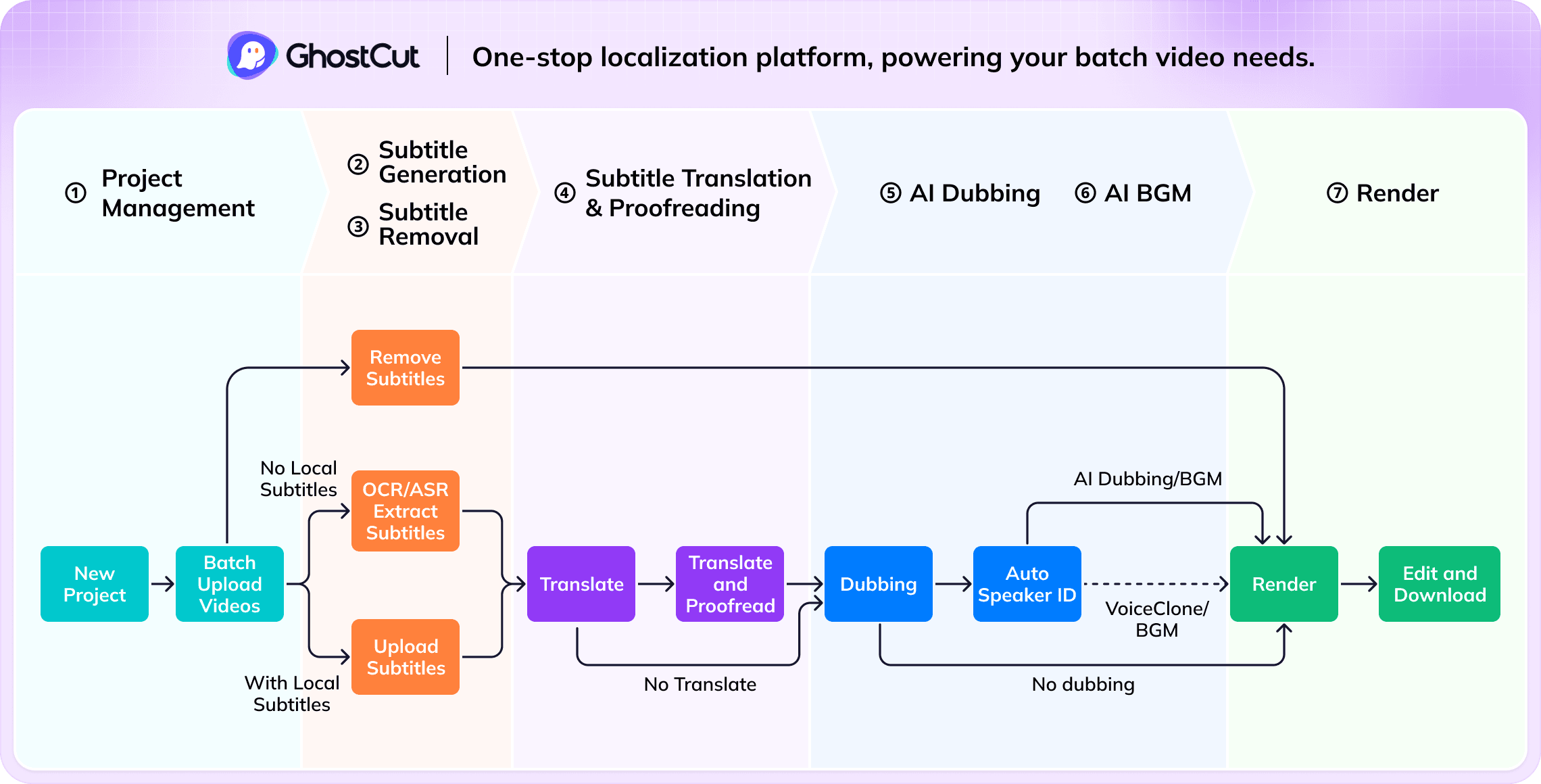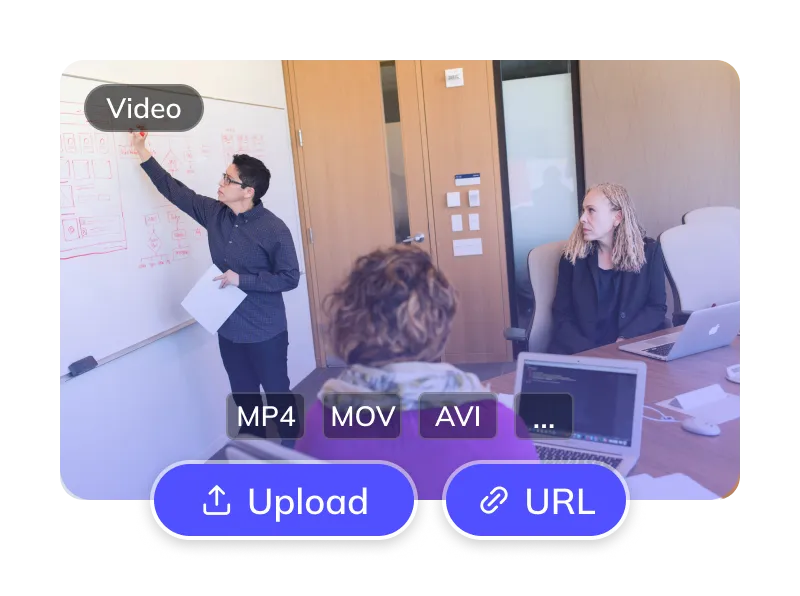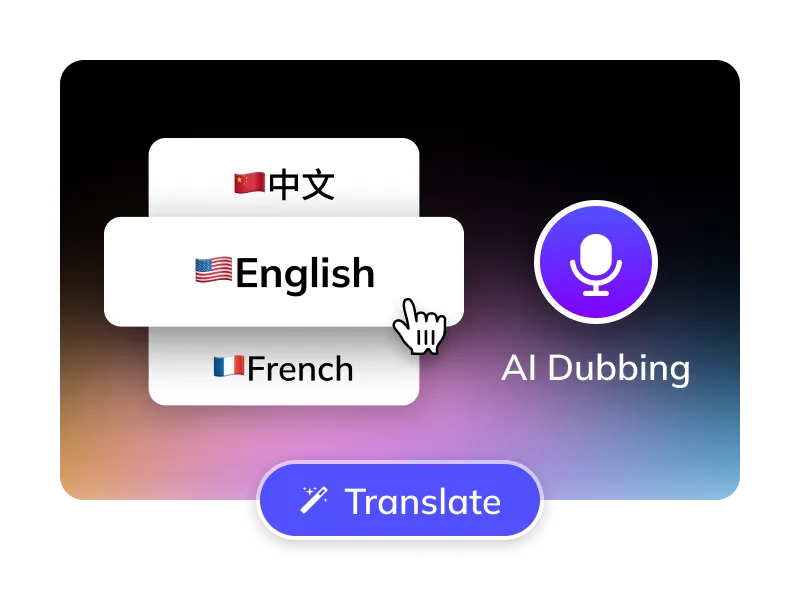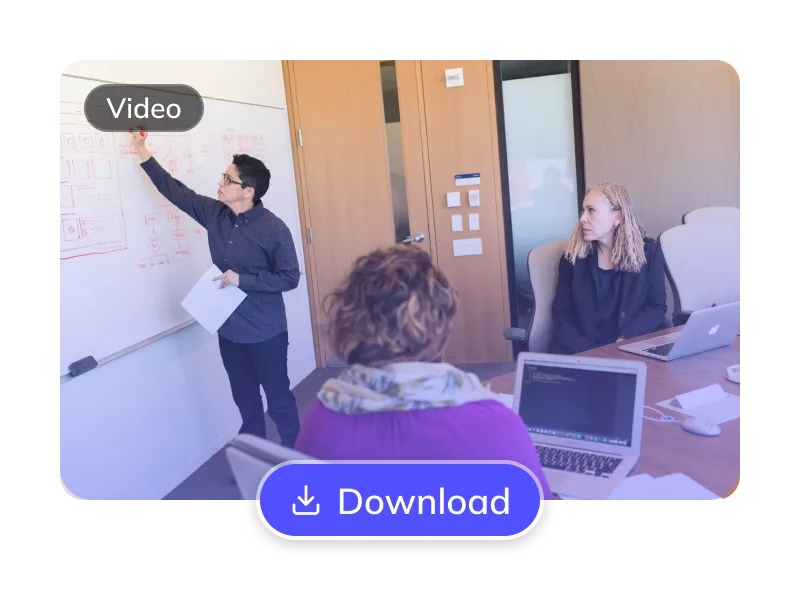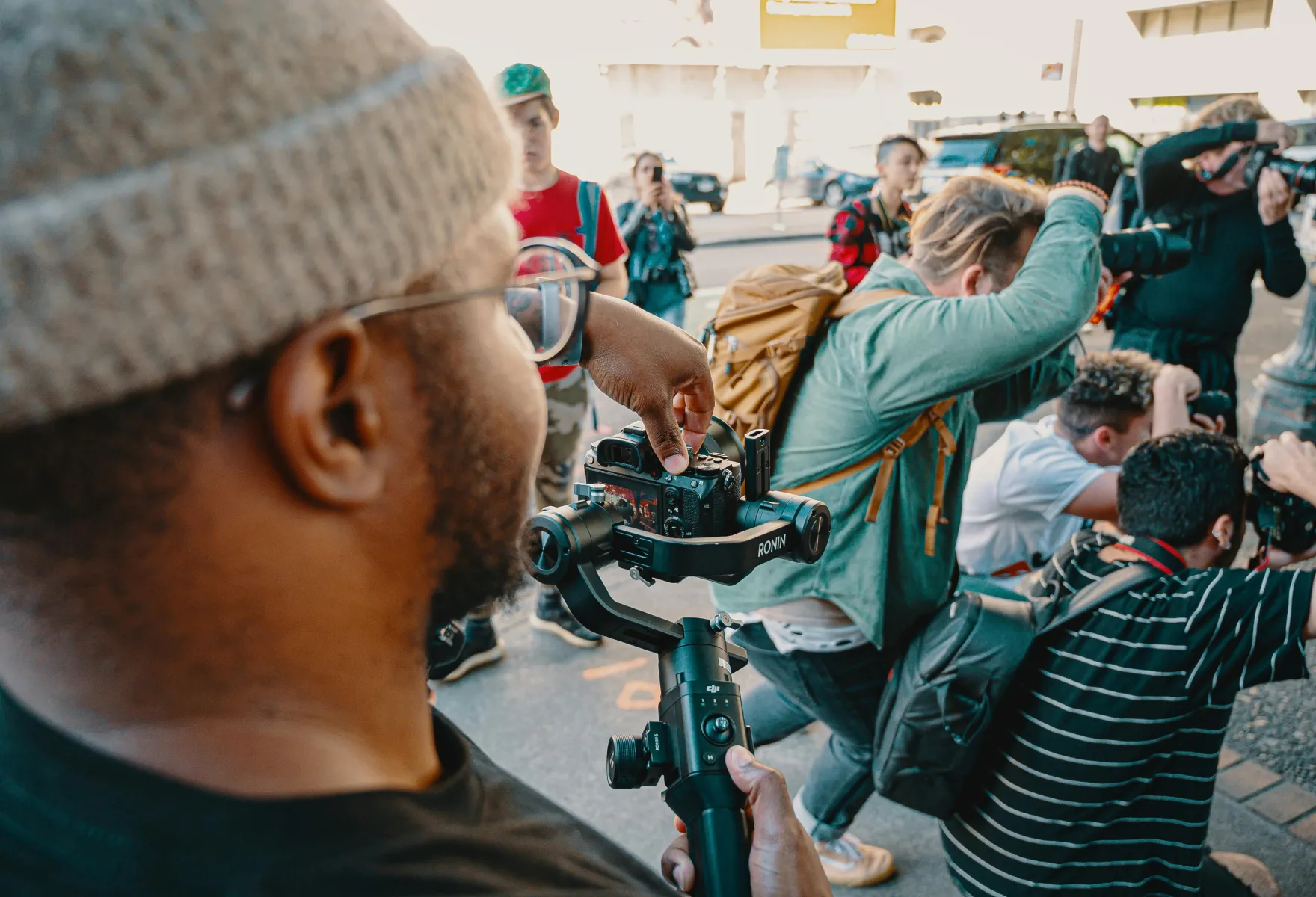How to Translate Korean Videos to English ?
Translate Korean Videos to Traditional-Chinese in 3 Easy Steps
Trusted by 1,500,000+ Global Creators and Businesses
Why GhostCut for Your Video Translations?
GhostCut is your all-in-one AI solution for translating Korean content into natural, engaging Traditional-Chinese.
Effortless Project Management
Manage Korean assets, subtitles, & Traditional-Chinese videos. Batch process projects efficiently.
Pinpoint Traditional-Chinese Accuracy
Up to 99.5% accurate. Optimized for Korean-to-Traditional-Chinese with LLM calibration & multi-agent review for culturally fluent Traditional-Chinese translations.
Lifelike Traditional-Chinese AI Dubbing
Choose from diverse, human-like Traditional-Chinese AI voices (US/UK accents). Emotion-cloning technology captures original tone for natural Traditional-Chinese delivery.
Flexible Korean Subtitle Options
Optionally erase original Korean hardsubs for a clean slate. Translate embedded Korean subtitles directly.
Smart Multi-Speaker ID (Korean)
AI detects multiple speakers in Korean videos. Assign or clone distinct Traditional-Chinese voices per character, with cross-episode consistency for complex Traditional-Chinese dubs (dramas, interviews).
Efficient Batch Processing & API
Batch translate and dub 100s of Korean videos to Traditional-Chinese at once. Seamlessly integrate with our robust API.
Versatile BGM Control
Keep or mute original BGM. Our unique tech can also isolate sound effects, meeting diverse copyright and distribution needs.
Unbeatable Value
Flexible Korean-to-Traditional-Chinese plans. Try core features free. Automated pro service from just $0.1/minute.
Easy Online Access
No downloads. Instantly translate Korean videos to Traditional-Chinese online. Works on Windows, Mac, & major mobile browsers for cloud processing anywhere.
The GhostCut Edge: Unmatched Accuracy, Speed, and Value.
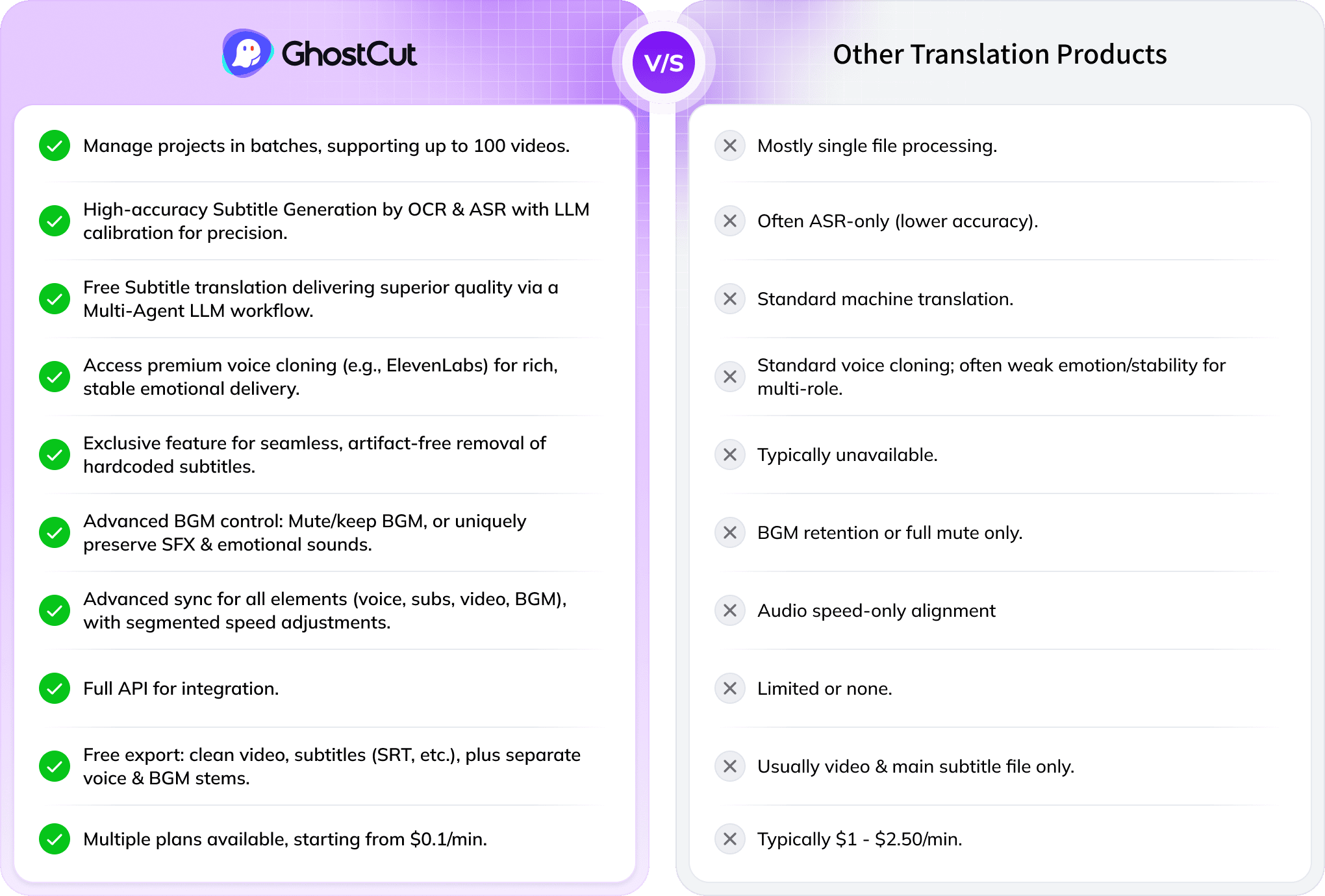
Every Algorithmic Optimization, Engineered for Quality Traditional-Chinese Video
Mastering Long-Form Korean Drama & Multi-Character Dubbing
Translating a 100-minute Korean drama with 4000+ lines and many characters into Traditional-Chinese is tough. Standard AI struggles to tell speakers apart, causing errors. GhostCut’s multi-modal AI (video, voice, text) excels in long-form, multi-speaker content, ensuring accurate, consistent character voices across entire series.
Translate Now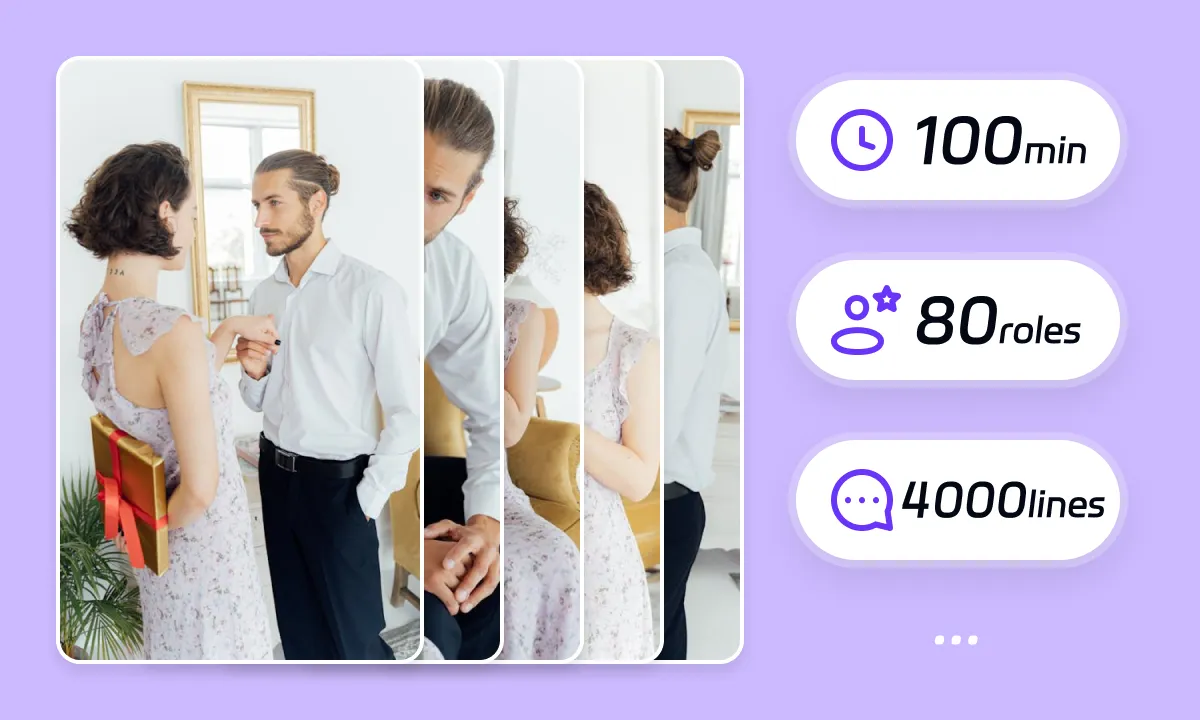
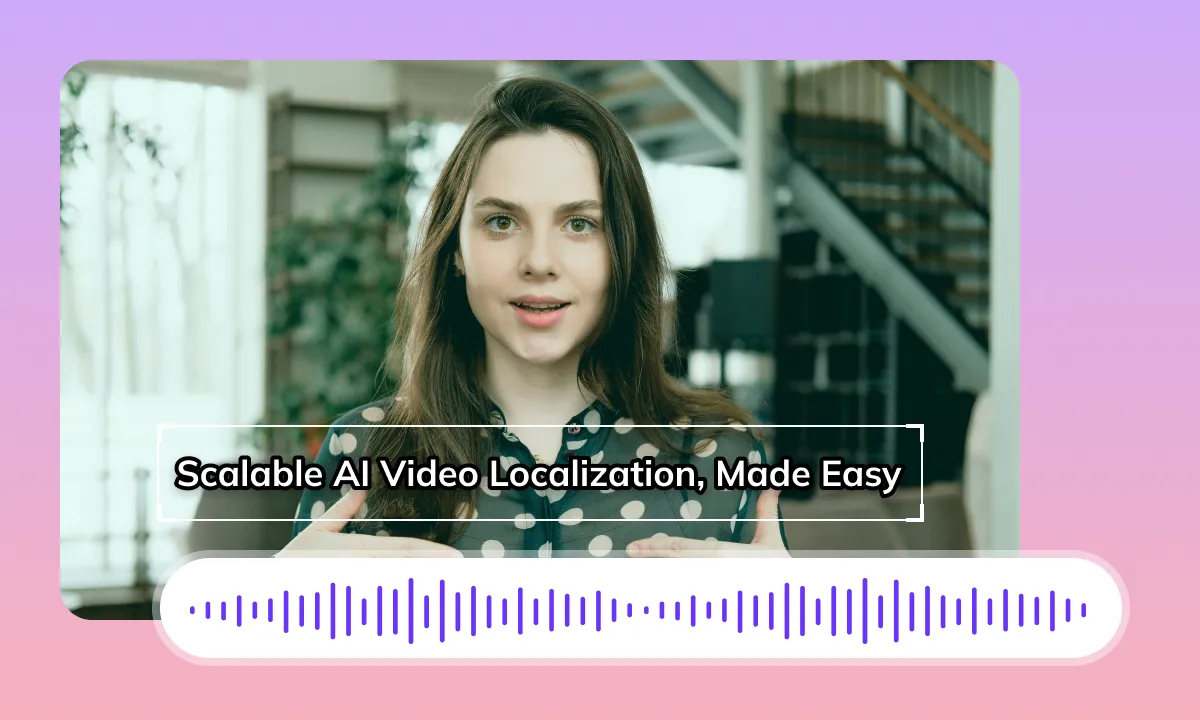
Seamless Traditional-Chinese Dubbing & Perfect Lip-Sync
GhostCut ensures natural Traditional-Chinese audio flow by treating related subtitles as whole ideas for TTS. It then precisely times new Traditional-Chinese subtitles. Since Korean-to-Traditional-Chinese translation can change speech length, our AI expertly adjusts the new Traditional-Chinese audio, subtitles, video, and BGM to maintain perfect sync, just like a seasoned editor.
Translate NowBoost ROI with Flawless Korean Subtitle Removal
Original Korean hardsubs can limit your video's global appeal. GhostCut’s AI doesn't just blur; it intelligently reconstructs the background obscured by Korean subtitles, even complex ones, for a perfectly clean, high-quality visual. This means better viewer engagement, longer watch times, and higher ROI.
Translate Now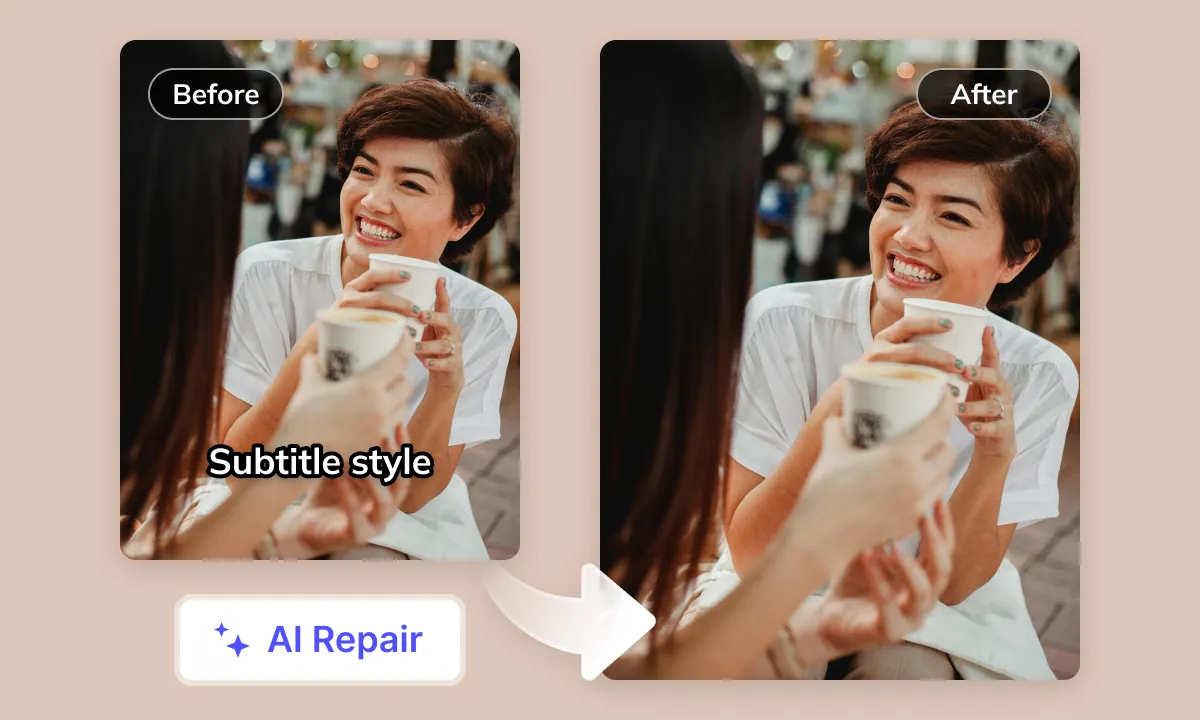
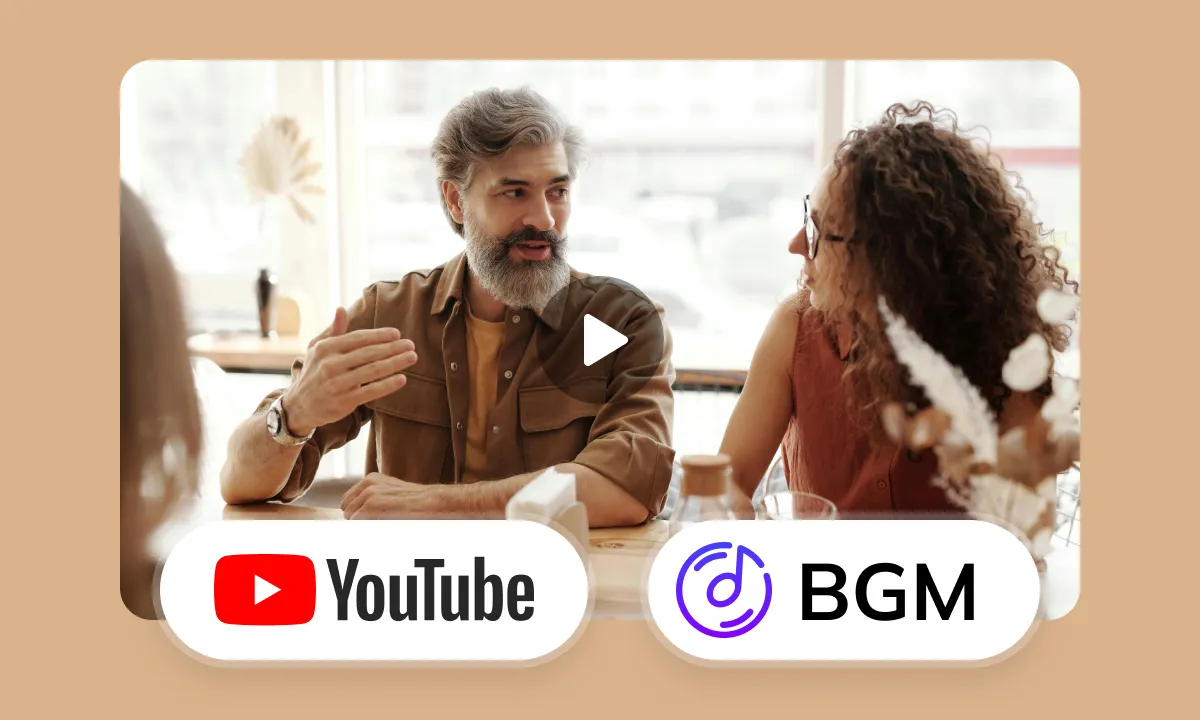
Smart Audio Control for YouTube Creators
Navigating BGM copyright on YouTube is tricky. GhostCut’s advanced audio separation isolates Korean dialogue for translation, while intelligently managing BGM, sound effects, and even emotional expressions. Our "Keep SFX, Remove Music" option is a creator favorite for avoiding copyright issues without losing your video’s impact.
Translate NowYour Korean Videos Deserve a Traditional Chinese Audience
Popular Korean content, despite a large global fan base, struggles to reach wide audiences in Traditional Chinese areas like Taiwan, Hong Kong, and Macau due to language barriers.On major platforms, many great Korean videos lack professional Korean-to-Traditional Chinese translation (subtitles and dubbing). This language gap hinders Traditional Chinese users' understanding, impacting viewing experience, user interaction, and limiting the spread of Korean content in these areas.Consequently, there's an urgent need in the market for professional, efficient AI services for Korean-to-Traditional Chinese video translation and dubbing
Korean Video Translation to Traditional Chinese: Insights and Challenges
Issues with Original Audio and Embedded Subtitles
If Korean videos contain hardcoded subtitles or if the Korean voiceover is poorly handled, it can significantly impact the viewing experience for audiences in Traditional Chinese regions like Taiwan or Hong Kong
Grammar, Cultural, and Lexical Barriers
Korean's unique grammatical structure (e.g., word order, particle usage), honorific system, rich cultural references, and context-dependent vocabulary differ significantly from Traditional Chinese. Literal translation can result in unnatural or misleading interpretations. The key is to accurately and naturally convey the original meaning in the translated text
Differences in Text Presentation
Korean characters (Hangul) and Traditional Chinese characters differ in visual density and spatial occupation. When translating Korean content into Traditional Chinese, careful adjustments are required for subtitle line breaks, character count per line, and display duration to ensure clear readability of on-screen information
Balancing Speaking Speed and Information Density
Korean expression styles may differ from Traditional Chinese in terms of information density and speaking speed. This poses a challenge for audio-visual synchronization after translation, requiring rhythm adjustments to ensure a smooth viewing experience
Limitations of Korean AI Recognition
Regional Korean accents, multi-speaker overlapping dialogue scenarios, and background noise interference can all affect the accuracy of AI-based Korean speech recognition
Lack of High-Quality Traditional Chinese AI Voices
While AI voice libraries are continuously expanding, finding natural, emotionally expressive, and suitable Traditional Chinese AI voices for video dubbing remains relatively difficult, with high-quality options being particularly scarce
Precision Requirements for Lip Synchronization
The mouth shapes during Korean and Traditional Chinese pronunciation differ. Therefore, achieving a high degree of lip synchronization with the original video's characters during Traditional Chinese dubbing presents significant technical challenges
Goals for Top-Tier AI Video Translation
Ideal AI video translation should achieve: accurate Korean speech recognition - highly idiomatic Traditional Chinese translation that considers both culture and grammar - natural, fluent Traditional Chinese AI voiceovers that closely match lip movements - and automated, precise audio-visual synchronization and editing
Tackling Video Translation Challenges with AI Empowering your Korean content for any worldwide scenario.
Your All-in-One AI Translation Studio
GhostCut offers more than just Korean-to-Traditional-Chinese translation. It's a complete AI-powered workflow: subtitle extraction 、 removal 、 translation and proofreading to multi-character dubbing , BGM processing, and final rendering. Go from Korean source to global-ready videos, effortlessly.
